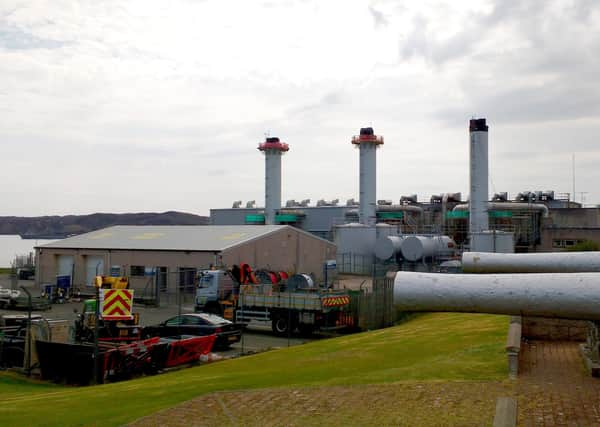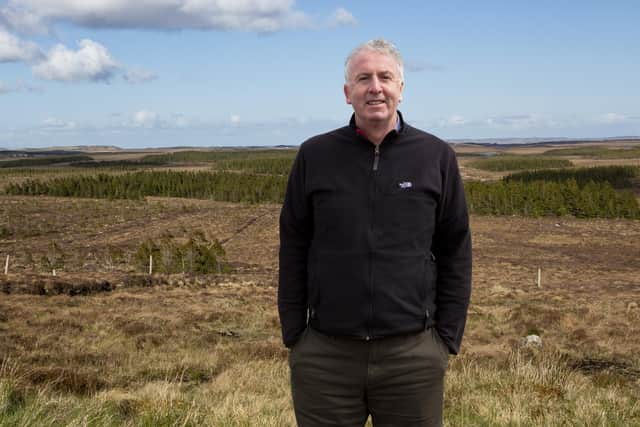Making the case for a new community cable to Skye


But it has also created an opportunity for a major reset of our energy strategy for the islands which could leave us substantially better off than we were before the crisis provided that local and national government work together to deliver on that opportunity.
With the cable broken and all the island wind farms forbidden from generating and selling energy the financial hit is enormous.
Advertisement
Hide AdAdvertisement
Hide AdIn a typical year community wind farms on Lewis and Harris earn around £5 million from selling their energy and the privately owned wind farms earn a similar amount resulting in a total of around £10 million lost income over the anticipated 12 months of outage.


SSE is hit hard too. It has fired up the old diesel generators at the Stornoway power station to supply the island’s power needs and hired a number of mobile diesel gensets as an emergency back-up. We don’t know the exact consumption of these generators nor the price that SSE pay for their diesel but in my opinion it is likely to cost around £50,000 a day or up to £20 million over 12 months. In total, therefore, you can say that the financial cost of the cable crisis will be in the region of £30 million.
The enormous social impact of the loss of income to the local charities supported by the community wind farms is now well known while the environmental cost is seen from the black smoke emerging from the station chimneys and which requires a special SEPA dispensation to be permitted.
So what can be done about it and where, in the midst of this gloom, is the opportunity?
Advertisement
Hide AdAdvertisement
Hide AdIn the first instance, we need to fix the local grid so that being cut off from the mainland (which normally happens about 20 days a year) no longer means that the wind farms have to be shut down as well. The solution to this is to install a battery to support the local grid and protect it from the volatile surges and dips in output that wind farms are prone to especially in an environment like the Hebrides.
SSE is to be commended for being open to new ways that this might be done. One option would be to link each wind turbine to its own small battery to provide ‘peak shaving’ and make it easier for the Stornoway power station to manage them. Another, and a better one in my view, is to install one big battery to support and manage the whole grid.The latter solution would allow all the local turbines to restart operations again, not back to normal, but substantially better than the lockdown we have now. It will require local and national government working with SSE and the electricity regulators, such as Ofgem, to deliver this in a reasonable time frame. If done, the long-term stability and functioning of the local grid can end up better than before this crisis happened.
The second and even more important opportunity is to use this crisis to demand not simply a replacement cable to Harris but a bigger cable that can boost the community sector by easing the grid bottleneck that has been stifling development for the past five years. The need for a bigger cable to Skye has been raised before but the official response has been to urge patience and to wait for the big super connector from Lewis to Ullapool. Indeed, there was even a concern that pressing the case for an upgraded cable to Skye might undermine the case for the long-awaited super connector.
These arguments need to be binned now. After the Skye cable has been replaced there will be no chance to upgrade it again for another 30 years. We have to take the opportunity in front of us now or lose it for good.
Advertisement
Hide AdAdvertisement
Hide AdIn 2017, Point and Sandwick Trust commissioned a study into the Skye cable which showed it could be expanded to provide an extra 100 MW of capacity (the old cable was 22 MW) at a cost of £70 million. Given the £30 million cost of the this year’s cable disaster that would seem to be very good value!
Provided that the access to this extra capacity is reserved for smaller ‘distribution scale’ wind farms (in the island context this should be 40 MW or below) then there is no reason why the case for the big super connector should be undermined and the large corporate developers such as EDF can continue to press their case.
The small wind farm projects currently in development are predominantly community owned such as the 30 MW Arnish community consortium project which is in the pre-planning stage and the 6MW Knock and Swordale turbine which received planning consent earlier this year. We have a golden opportunity now to deliver these projects plus other community ones coming through.
As everyone now appreciates, the community energy sector is irreplaceable in the support it provides to our local ecosystem of community charities and projects providing important and worthwhile jobs as well as vital local services.
Advertisement
Hide AdAdvertisement
Hide AdTo build on that success we need to make the new Skye cable a ‘community cable’ that is bigger and better for our islands. There is no practical or financial reason why that cannot happen but it will require all of us in the community sector, local and national government, SSE and Ofgem, to work together. It is an opportunity too important for the islands to miss.